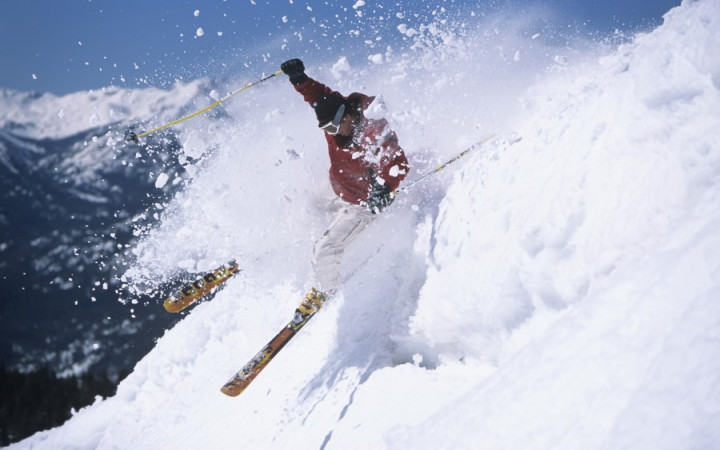What do you look forward to when winter arrives and the temperatures outside begin to drop? If you're like millions of children all over the world, the answer to that question is one thing and one thing only: SNOW!
When snow falls and piles up outside your front door, you may start hoping for a snow day. After all, it's always fun to have a surprise day off school, so you can enjoy playing in the snow. Some kids will grab their sleds and head for the nearest hill.
Others may look forward to a more exciting adventure, zipping down the side of a mountain on thin strips of wood. What are we talking about? Snow skiing, of course!
Even a light dusting of snow will allow you to have some fun sledding down a grassy slope in your backyard. But what about skiing down the side of a tall mountain? How much snow needs to fall to permit skiers to hit the slopes in search of adventure?
As experienced skiers and the owners of ski resorts will tell you, there are many factors that contribute to a fantastic skiing experience. Snowfall is, obviously, an important factor. But how much is enough? That largely depends upon what's under the snow.
In some areas, pistes (the slopes or trails that skiers follow down a mountain) cut across grassy pastures. In these areas, as little as 2-4 inches of snow may be sufficient. Other pistes, however, may traverse uneven, rocky terrain. In these areas, several inches to several feet may be necessary to cover the rocky surface.
Even more important than the amount of snowfall is the amount of snow that is retained on the slopes. If a deep base layer of snow already exists, new snowfall is likely to stick around longer. If it's the first snow of the season, though, ski resorts must use heavy machinery to compact the pistes on the mountain in order to keep new snowfall from blowing away or melting too quickly.
A particular resort doesn't necessarily have to get the most snowfall each year to have the best skiing conditions. Those resorts that have snow that sticks around the longest tend to have the best, longest seasons. Some factors that influence how long snow sticks around include the altitude of the resort, the orientation of the mountain, and how sheltered the mountain is from weather patterns that can lead to snow melting more quickly.
Of course, today's modern ski resorts are big businesses. And they don't necessarily like to rely on Mother Nature to keep their customers happy. Most ski resorts today rely on modern snow making technology to keep their slopes covered in powder all throughout the year. Some resorts even make artificial snow early in the season in order to open the slopes as soon as possible, even before the first major snowfall hits!
Resorts must be careful not to make too much artificial snow, though. If Mother Nature decides to dump an incredible amount of snow during a particular season, skiing can suffer rather than thrive. Too much snow? Yes! It can be a problem for ski resorts. When too much snow falls, it can be impossible to compact pistes safely. A heightened danger of avalanches can also cancel skiing for days or weeks at a time.





